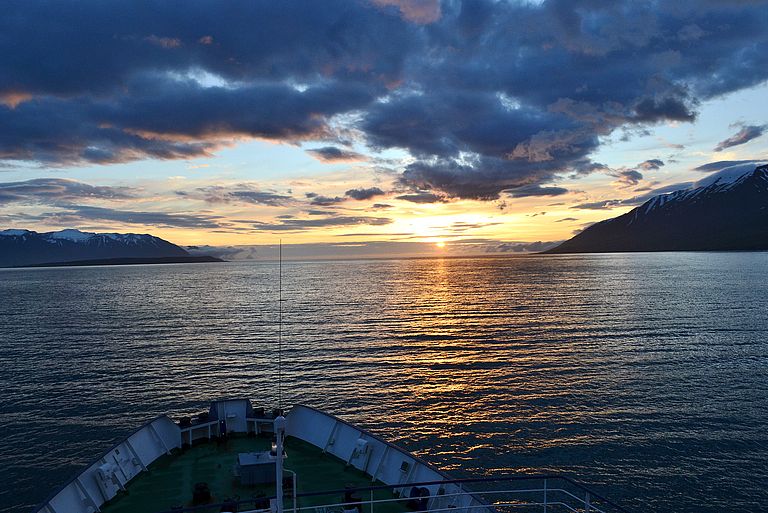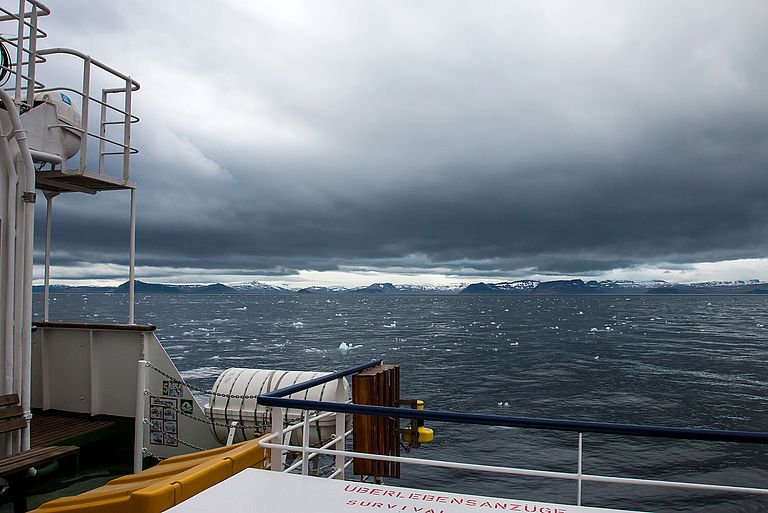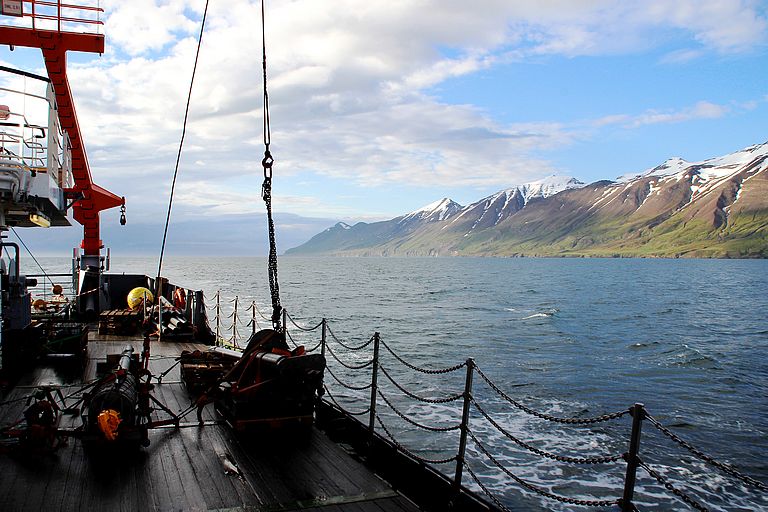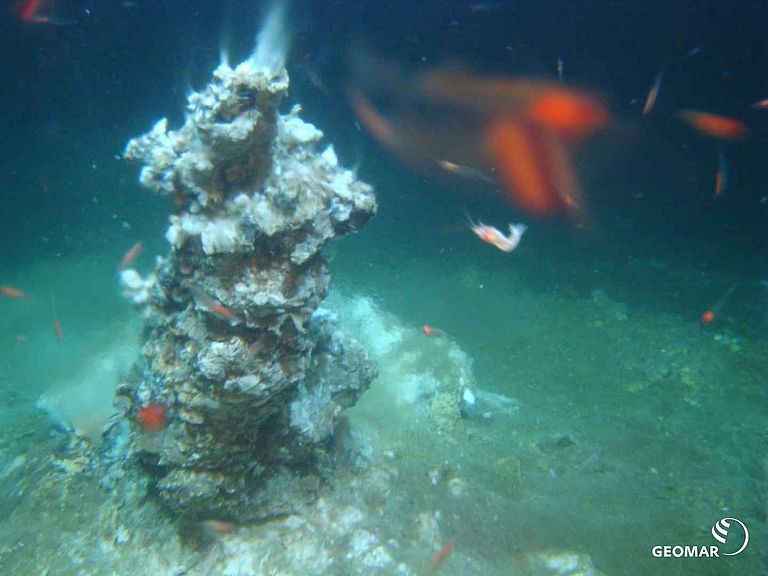ANTON and LUISE on mapping course off Iceland
Expedition with two autonomous underwater vehicles to the Grimsey hydrothermal field
At the bottom of the North Atlantic, north of Iceland, hot fluids rise from the sediment-covered seafloor. They are up to 250 degrees hot and enriched with up to 40 percent carbon dioxide (CO2). Other contained elements are deposited underground. The Grimsey hydrothermal field is associated with the Mid-Atlantic Ridge and lies in only 400 meters of water depth. An expedition with the German research vessel ALKOR, led by geophysicist Dr. Sebastian Hölz and microbiologist Professor Dr. Mirjam Perner from GEOMAR Helmholtz Centre for Ocean Research Kiel, will now provide new information about the area. For this purpose, the two Autonomous Underwater Vehicles (AUV) ANTON and LUISE are on board. The AUV duo specializes in high-resolution mapping and documentation of structures on and in the seafloor.
"On previous expeditions in 2018 and 2019, we conducted geophysical experiments at the Grimsey Hydrothermal Field using electromagnetic methods to detect and more accurately characterize hydrothermal fluids and potential mineralization present in the seafloor. Our measurements show anomalies in certain areas that could be caused either by an accumulation of particularly salty, boiling fluids at a depth of about 20 meters in the seafloor or by massive mineralization," explains cruise leader Dr. Hölz. "At the same time, however, we see no evidence of hydrothermal activity at this site. This leads us to suspect that it is massive mineralization – and we now want to investigate this assumption with new methods."
For this purpose, the AUVs ANTON and LUISE will survey the topography of the seafloor in high resolution. The data can be used to map the seafloor in more detail to better understand the geology and hydrothermal activity. As a second focus, microbiological studies will be conducted in conjunction with geochemical analyses to obtain an inventory of organisms that can exist in the seemingly inhospitable living conditions due to their specialization. "Because microorganisms in such environments are adapted to extremely high concentrations of carbon dioxide and possibly high temperatures, they could be of future interest in addressing the CO2 problem if their metabolic processes were better understood and applied to convert CO2 into non-critical substances."
ALKOR-expedition AL595
31. May 2023 – 20. June 2023
Kiel – Kiel

Midnight sun in Eyjafjörður, Expedition POS524, Poseidon. Photo: Gesa Franz, GEOMAR

In transit from Reykjavik to Grimsey, Expedition POS524, Poseidon. Photo: Konstantin Reeck, GEOMAR

In transit from Akureyri to Grimsey in Eyjafjörður, Expedition POS524, Poseidon. Photo: Konstantin Reeck, GEOMAR

View of a hydrothermal vent under water, symbolic image, photo: GEOMAR


